Will Sherman, Religious Studies, UNC Charlotte
This seminar attends to the stories that Muslims in the United States have narrated: what is it like to live as Muslim in the United States? And how can we approach such accounts so that we may pose broader questions related to identity, religion, and immigration in the United States? Though we’ll focus on the lives of Muslims in Charlotte and the United States, the materials we’re considering allow us to think through a host of questions connected to history, literature, religion, politics, and identity. Contrary to popular opinion and many stereotypes, Muslims have played an important role in the history of the United States since the seventeenth-century when enslaved Muslims were brought to the continent as part of the Trans-Atlantic slave trade, and American Muslims have told stories of their experiences for just as long. This seminar will focus both upon written accounts of Muslim life from the 18th-century onward and upon “oral histories” of being Muslim in Charlotte that Dr. Sherman has been collecting in conversation with the local Muslim community. These personal narratives of Muslim life range from the 1831 autobiography of Omar ibn Said (a Muslim sold in a slave auction at Fayetteville, NC) to the essays of African American women who joined the Nation of Islam and other mid-century religious movements, graphic novels on the life of teenage Muslims, and recent poetic and aesthetic expressions of the anxieties of being Muslim in the contemporary political environment. As a seminar, we will work collectively to to connect these personal stories to topics relevant in a number of fields: cultural histories of race, identity, and religion; legal, political, and civic philosophies; artistic expressions; patterns in the history of immigration to the United States; geography and architecture in Charlotte; and activism, gender, and poetry.
Ultimately, this is a seminar about stories—stories that are not often heard, stories that are told through music, art, architecture, and the written word, and stories that force us to think critically about religion, race, history, and cultural difference as fundamental aspects of Charlotte. In place of providing abstracted histories and definitions of “Islam,” this seminar emphasizes the value of building understanding out of the lived experiences and imaginations of American Muslims across history.
Possible Primary Sources
- The Moor’s Accountby Laila Lalami
This is novel told from the perspective of an enslaved Muslim of North Africa as he accompanies Spanish conquistadors in 16th century Florida. It’s an excellent way to rethink assumptions about racial categories and understand the importance of perspective in history writing.
Omar ibn Said wrote an Arabic autobiography in 1831 that discussed his life: from the time he was captured in West Africa to the multiple times he was sold at auctions in North Carolina. It’s a stunning document, and one of our earliest slave narratives.
There is growing and beautiful collection of books aimed at younger readers that feature Muslim characters and narrate scenes of Muslim life. These four books are just a small sample of what’s available (though they’re some of my favorites!).
- Articles and essays from Moslem Sunrise
Started in 1921, Moslem Sunrise (now The Muslim Sunrise) was a magazine for the Ahmadiyya movement’s branch in the United States; they were a group of Muslim reformers from South Asia who had considerable success in appealing to African Americans in cities such as Chicago and Detroit. There are many personal testimonies in this from Black men and women who converted to Islam in the 1920s and 1930s.
An absolutely essential document that still serves as many Americans’ first sustained encounter with Islamic traditions.
- Little X: Growing Up in the Nation of Islamby Sonsyrea Tate
A beautiful, accessible account of what it was like to be a child in the Nation of Islam when it was at its most socially influential.
- Transcribed oral histories of women in the Nation of Islam from Women of the Nationby Jamillah Karim and Dawn-Marie Gibson
Gibson and Karim have gathered personal narratives from women who spoke to the varieties of ways in which people experienced the Nation of Islam from the 1960s until the 1980s.
A documentary about a Puerto Rican rapper in Pittsburg who converts to Islam and uses his music to be both an activist and community organizer.
- Poetry by Mohja Kahf (Hagar Poems) and Solmaz Sharif (Look)
Poetic reflections on the challenges of being a Muslim woman in the contemporary United States
- Plays writtenby Yussef El Guindi
These plays identify (and describe in hilarious ways) the absurdities that many Muslims feel when their “boring” lives come under intense scrutiny from security forces.
- Call Me Americanby Abdi Nor Iftin
A recent memoir by a Somali refugee on his journey
- Amina’s Voiceby Hena Khan
The works of Hena Khan are excellent books for readers aged 9-12
- Excerpts from Amina Wadud’s Inside the Gender Jihad
Wadud has been an important influence on American women Muslims in recent efforts to offer “womanist interpretations” of the Qur’an
- Graphic novels and comics by G. Willow Wilson (Cairo, Marvel), Marjane Satrapi (Persepolis), and Toufic El Rassi (Arab in America)
Oral histories collected by Dr. Sherman from Muslims of the Charlotte community
Key Secondary Sources (to be excerpted or suggested for participants)
- Su’ad Abdul Khabeer, Muslim Cool: Race, Religion, and Hip Hop in the United States (link)
- Zareena Grewal, Islam is a Foreign Country (link)
- Sylvia Chan-Malik, Being Muslim: A Cultural History of Women of Color in American Islam (link)
- Sylvester Johnson, African American Religions, 1500-2000 (link)
- Kambiz GhaneaBassiri, A History of Islam in America (link)
- Rosemary Corbett, Making Moderate Islam(link)
- Todd Green, The Fear of Islam: An Introduction to Islamophobia in the West (link)
Seminar Participants:
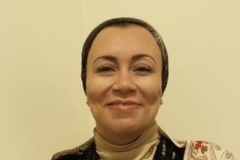




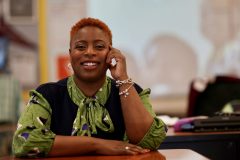
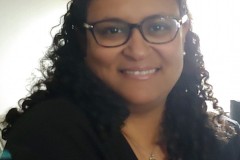
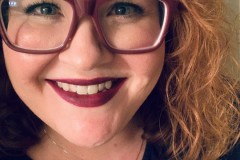
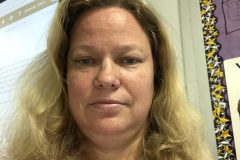

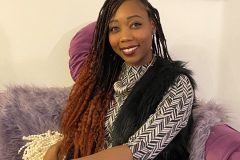











 Home
Home